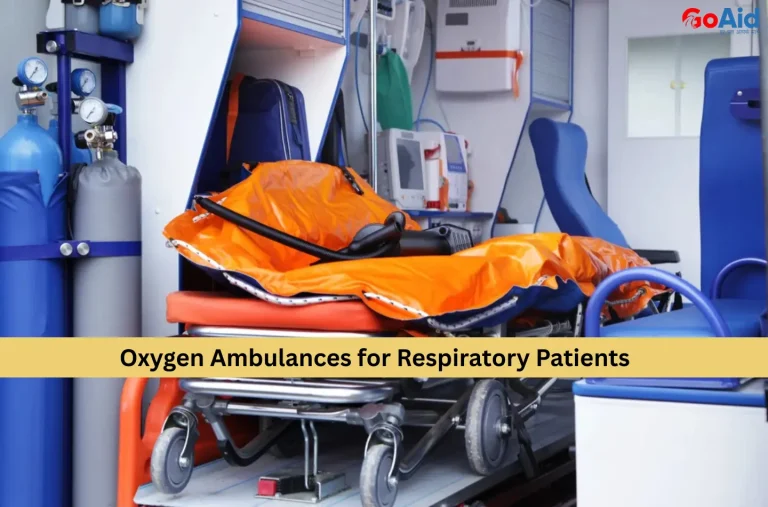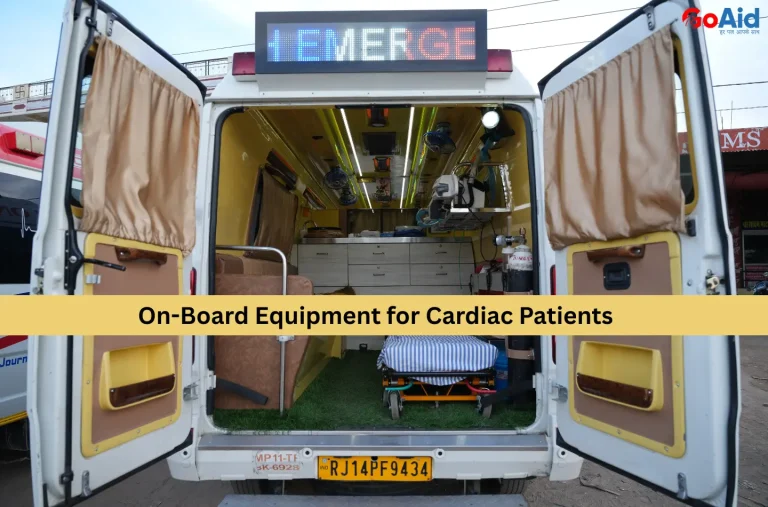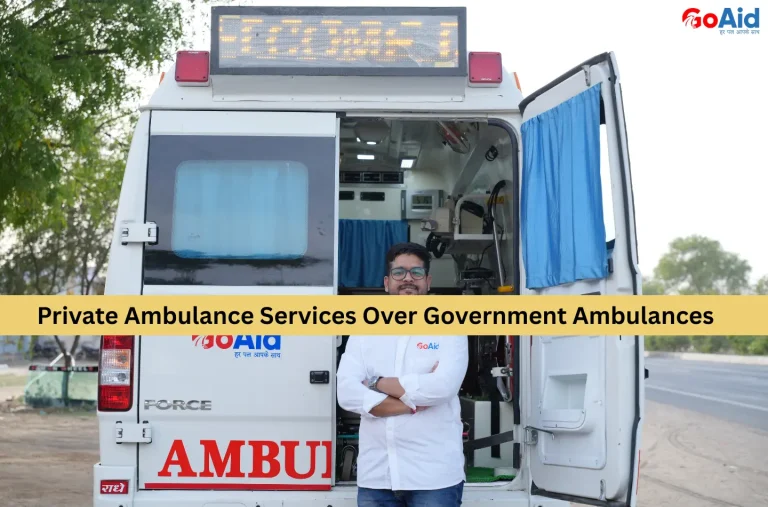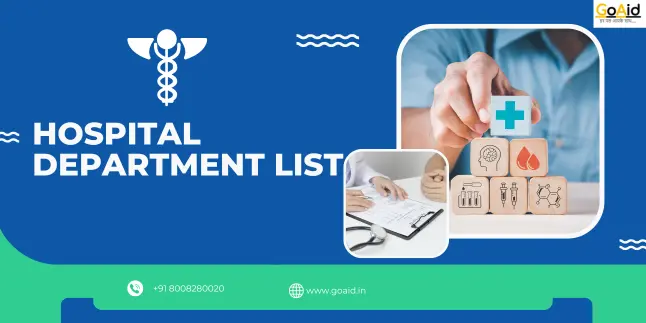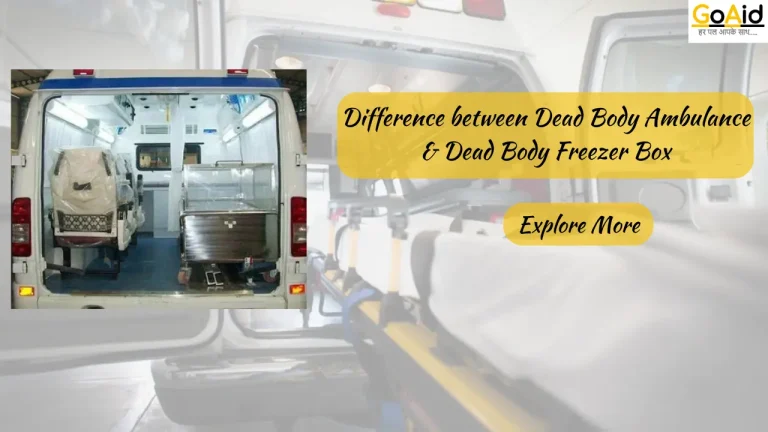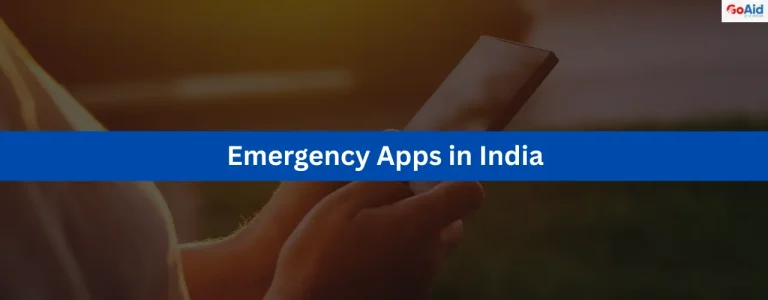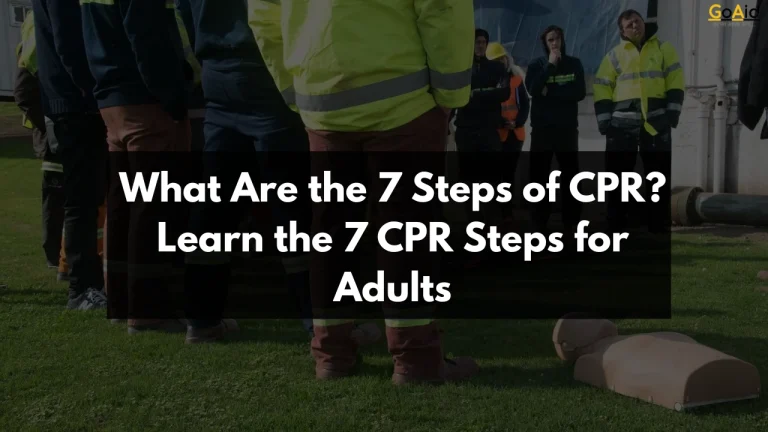Finding a reliable and verified ambulance during emergencies can be challenging, especially when every minute counts. Many people struggle with unverified services, delayed response, or inadequate medical support. This makes it essential to know the right steps to book a trusted ambulance in your city.
This is why, in this blog we have provided you with all the details about what to check before booking, how to identify trusted providers, benefits of using GoAid, the fastest booking methods, information needed during emergencies, ambulance types, charge comparisons, and why immediate response is critical. Do you want to know all these information in detail? then read our blog to the end.
So, lets start
What Should You Check Before Booking an Ambulance?
Before booking an ambulance, itŌĆÖs essential to verify its credibility, response time, and equipment to ensure safe and timely transport during emergencies.
1. Ambulance Type & Equipment
Check whether the ambulance has required life-support systems like oxygen, ventilators, ECG, and emergency drugs suitable for the patientŌĆÖs condition.
2. Certified Medical Staff
Ensure trained EMTs or paramedics are present to manage emergencies en route. This provides professional care during transfer.
3. Response Time
Confirm the average time the ambulance takes to reach your location; a fast response is critical in emergencies.
4. Service Availability
Verify 24├Ś7 availability. This includes nights and holidays, to ensure assistance is accessible whenever needed.
5. Licensing & Registration
Check if the ambulance is government-approved, licensed, and follows legal and medical regulations for patient transport.
6. Patient Safety Protocols
Ensure proper safety measures are in place. This includes secure stretcher handling, immobilization techniques, and monitoring during transit.
7. Transparent Charges
Confirm the pricing structure beforehand to avoid hidden fees and compare costs with other verified providers.
8. Insurance & Coverage
Check if the service is recognized by hospitals or insurance providers for easy reimbursement.
9. Customer Reviews & Reputation
Look for reviews, ratings, and testimonials to assess reliability and quality of care.
10. Communication & Tracking
Ensure the service offers real-time tracking, updates, and easy communication with drivers or medical staff during emergencies.
How to Identify a Trusted & Verified Ambulance Service?
Choosing a reliable ambulance service ensures safe patient transfer, timely response, and professional care during medical emergencies.
1. Official Certification
Check if the service is registered with the government or health authorities, proving legitimacy and compliance with regulations.
2. Trained EMTs & Paramedics
A trusted provider always deploys certified medical personnel trained in emergency care, life support, and patient handling.
3. Modern Ambulance Fleet
Ensure the service has well-maintained, fully equipped ambulances suitable for different emergencies like ICU, BLS, or neonatal transport.
4. Quick Response Time
Verified services maintain average reach times of 10ŌĆō15 minutes in urban areas. This ensures prompt emergency support.
5. Transparent Pricing
Look for services with clear, government-approved rates and no hidden charges to avoid billing issues.
6. 24├Ś7 Availability
A trusted provider operates round-the-clock. This includes nights, weekends, and holidays. This offers emergency coverage anytime.
7. Customer Feedback & Ratings
Positive reviews, testimonials, and high ratings from real users indicate reliability and professionalism.
8. National or City-Wide Coverage
Choose services with coverage across your city or state for accessibility, especially in urgent or interstate emergencies.
9. Technology Integration
Verified providers offer app-based booking, GPS tracking, and real-time updates for convenience and transparency.
10. Commitment to Safety & Care
Trusted ambulance services follow strict patient safety protocols, provide monitoring en route, and maintain high standards of hygiene and medical care.
Why You Need to Choose Registered Providers Like GoAid?
Choosing registered ambulance providers like GoAid ensures professional, reliable, and legally compliant emergency transport. Registered services meet government regulations, maintain certified EMTs, and operate fully equipped ambulances suitable for all emergencies.┬Ā
GoAid ensures rapid response, proper pre-hospital care, and patient safety during transit. Using verified providers minimizes risks such as untrained staff, delayed arrival, or inadequate medical equipment. Registered services also follow standardized protocols for monitoring, immobilization, and medication administration. This ensures patients remain stable en route.
GoAidŌĆÖs national coverage, 24├Ś7 availability, and technology-enabled services like app booking and real-time tracking guarantee timely assistance. Families can trust GoAid for transparent pricing, safe transfers, and experienced paramedics.
In emergencies like cardiac arrest, trauma, or neonatal transport, every second counts, and registered providers like GoAid significantly improve survival outcomes compared to unverified services.
The Fastest Ways to Book an Ambulance in Your City
Dialing GoAidŌĆÖs dedicated hotline at 8008280020 is the quickest way to secure an ambulance. Alternatively, you can use GoAidŌĆÖs mobile app for instant booking, real-time tracking, and selecting the required ambulance type. This ensures fast and reliable emergency transport in any city.
How Does an Ambulance App in India Simplify Booking?
Ambulance apps like GoAidŌĆÖs streamline emergency transport by allowing users to book instantly, select ambulance types, and provide critical patient information digitally. Apps offer GPS tracking, showing the real-time location of the ambulance and estimated arrival time, which saves precious minutes during emergencies.
Users can choose BLS, ALS, ICU, or neonatal ambulances based on the patientŌĆÖs condition. Apps also store medical history and previous bookings. This ensures smoother communication between paramedics and hospitals.┬Ā
Notifications and updates inform families about the ambulanceŌĆÖs progress. This enhances trust and reducing anxiety. By integrating payment options, contact information, and service ratings, ambulance apps in India make emergency healthcare accessible, efficient, and transparent.
GoAidŌĆÖs app combines technology with trained EMTs. This ensures both speed and quality of pre-hospital care. This makes it an indispensable tool during critical medical emergencies.
Checklist: Information You Should Provide During Emergency Booking
Providing accurate details ensures the ambulance team arrives prepared and ready for effective care during emergencies.
1. Patient Name & Age
Provide full name, age, and gender of the patient to help paramedics prepare appropriate care and equipment.
2. Emergency Type
Specify the nature of the emergency, such as cardiac arrest, trauma, hypothermia, or childbirth, for correct ambulance assignment.
3. Patient Condition
Share current vitals, consciousness, breathing, and injury details to help EMTs prepare interventions en route.
4. Exact Location & Landmark
Give precise address, GPS coordinates, or nearby landmarks for quick ambulance navigation and faster response.
5. Contact Information
Provide primary and secondary phone numbers for communication with paramedics and hospital staff if needed.
6. Ambulance Type Required
Specify ICU, BLS, ALS, or neonatal ambulance based on patientŌĆÖs condition to ensure necessary equipment is available.
7. Allergies & Medical History
Share known allergies, ongoing medications, and chronic conditions for safe treatment during transport.
8. Number of Attendants
Inform how many family members or caretakers will accompany the patient for planning space in the ambulance.
9. Hospital Destination
Mention preferred or nearest hospital to direct paramedics and coordinate with hospital staff for rapid admission.
10. Additional Requirements
Any special requests, like ventilators, oxygen support, or neonatal care, should be mentioned for proper preparation.
How to Ensure the Ambulance Is Safe and Well-Equipped?
Ensuring the ambulance is safe and fully equipped is critical for patient care during emergencies. Proper verification prevents delays, complications, and ensures life-saving interventions en route.
1. Check Medical Equipment Availability
Verify that the ambulance has essential equipment such as oxygen cylinders, ECG monitors, defibrillators, ventilators, emergency drug kits, and stretchers. This ensures readiness for any critical medical situation during transport.
2. Confirm Vehicle Maintenance & Cleanliness
A well-maintained, sanitized ambulance reduces infection risk and ensures smooth operation. Check the vehicleŌĆÖs condition, brakes, tires, and overall hygiene before confirming the booking.
3. Verify Trained Paramedic Presence
Ensure the ambulance comes with certified EMTs or paramedics trained in life support, CPR, trauma care, and patient monitoring, capable of managing emergencies during transit.
4. Review Communication & Tracking Features
Check if the ambulance provides real-time GPS tracking, reliable communication with the driver, and updates on estimated arrival time for timely coordination with hospitals.
5. Confirm Safety & Comfort Measures
Ensure the ambulance has proper restraints, immobilization devices, and temperature control to keep patients safe, stable, and comfortable throughout the journey.
How to Select the Type of Ambulance While Booking One?
Choosing the right ambulance ensures appropriate care based on the patientŌĆÖs condition and urgency.
1. Assess PatientŌĆÖs Medical Condition
Determine if the patient requires basic monitoring, ICU support, neonatal care, or advanced life support to select the suitable ambulance type.
2. Consider Age & Special Requirements
For infants, elderly, or critically ill patients, opt for neonatal, pediatric, or ICU-equipped ambulances with specialized equipment and paramedic expertise.
3. Check Equipment Availability
Confirm that the selected ambulance has the necessary devices such as oxygen, ventilators, ECG monitors, and emergency drugs for the patientŌĆÖs condition.
4. Evaluate Emergency Severity
Critical emergencies like cardiac arrest or trauma require ALS or ICU ambulances, while stable patients may use BLS or standard ambulances.
5. Confirm Space & Comfort Needs
Consider whether attendants, family members, or medical devices need additional space for comfortable and safe transport.
6. Verify Hospital Requirements
Some hospitals may require specific ambulance types for admission. Ensure the ambulance matches hospital protocols and treatment requirements.
Charges Comparison of Verified Ambulance Services
Verified ambulance services like GoAid maintain transparent, government-approved rates, avoiding hidden charges. Private providers typically charge based on ambulance type ,BLS, ALS, ICU, or neonatal. Compared to unverified or irregular services, GoAid ensures clear pricing per kilometer, service type, and emergency care included.
This allows families to budget accurately during urgent situations without compromising safety. Government ambulances may be free or low-cost but often have slower response times and limited equipment.
Choosing a verified service balances affordability with professionalism, rapid response, and fully equipped ambulances. This ensures safe and reliable emergency transport for all patients.
Why Immediate Response Matters During Emergency Transport?
Immediate ambulance response is crucial for patient survival. During emergencies such as cardiac arrest, trauma, or severe injuries, every minute counts. Fast arrival ensures timely life-saving interventions. This includes CPR, defibrillation, oxygen therapy, and airway management.
Delayed response can result in irreversible damage, complications, or fatalities. Professional EMTs provide pre-hospital stabilization, continuous monitoring, and real-time communication with hospitals. This enables advanced preparation for treatment.
Rapid transport also reduces stress for patients and families. This improves recovery outcomes. Verified services like GoAid offer 10-minute average response times, trained paramedics, and advanced life-support ambulances. This ensures patients receive critical care en route to the hospital efficiently and safely.
Conclusion
In conclusion, we have provided all the information about booking a trusted and verified ambulance service in your city. From checking credentials, verifying equipment, and selecting the right ambulance type to using technology-enabled services like GoAidŌĆÖs app or hotline, families can ensure fast, safe, and professional emergency transport.┬Ā
Choosing verified providers with trained EMTs improves survival chances, ensures pre-hospital care, and guarantees transparent pricing. GoAid Ambulance Service stands out with rapid response, trained paramedics, advanced ambulances, and nationwide availability. This makes it the most reliable choice for emergencies in any city.
FAQs
Q1: How can I book a verified ambulance quickly?
A: You can book a verified ambulance instantly by calling GoAid at 8008280020 or using their app, which provides real-time tracking, ambulance type selection, and emergency-ready services across cities.
Q2: What should I check before choosing an ambulance service?
A: Verify licensing, EMT availability, ambulance type, equipment, response time, safety protocols, and customer reviews to ensure trusted emergency transport. GoAid provides all these features reliably.
Q3: Which type of ambulance should I choose for critical patients?
A: For critical cases, choose ALS, ICU, or neonatal ambulances equipped with life-support devices and trained paramedics. GoAid offers specialized ambulances for various medical emergencies.
Q4: Why is response time so important during emergencies?
A: Immediate response reduces complications, provides pre-hospital care, stabilizes patients, and improves survival chances. GoAid maintains 10-minute average response times with trained EMTs.
Q5: How are GoAid ambulance charges structured?
A: GoAid follows transparent, government-approved rates based on ambulance type, distance, and emergency care. This ensures affordability without compromising safety and professional medical support during transport.







